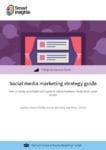There are many factors that can affect your strategy and new research is always churning up findings that you can make use of
We’ve written a lot on why you need a social media strategy and have given plenty of insights into how to create one, so you should be well versed on the benefits of a good social plan.
However, there are many factors that can affect your strategy and new research is always churning up findings that you can make use of – as well as methods that you should stop using in order to see the best results.
Just as with any marketing strategy, your plan for social media should be fluid, taking into account any new research, technology or platforms that come about. Sticking with a strategy that was put in place months ago and doesn’t reflect updated best practice can mean you don’t see the results or ROI you’re after.
With this in mind, here are some recent statistics that could inform your social media strategy and help your brand see the best possible results.
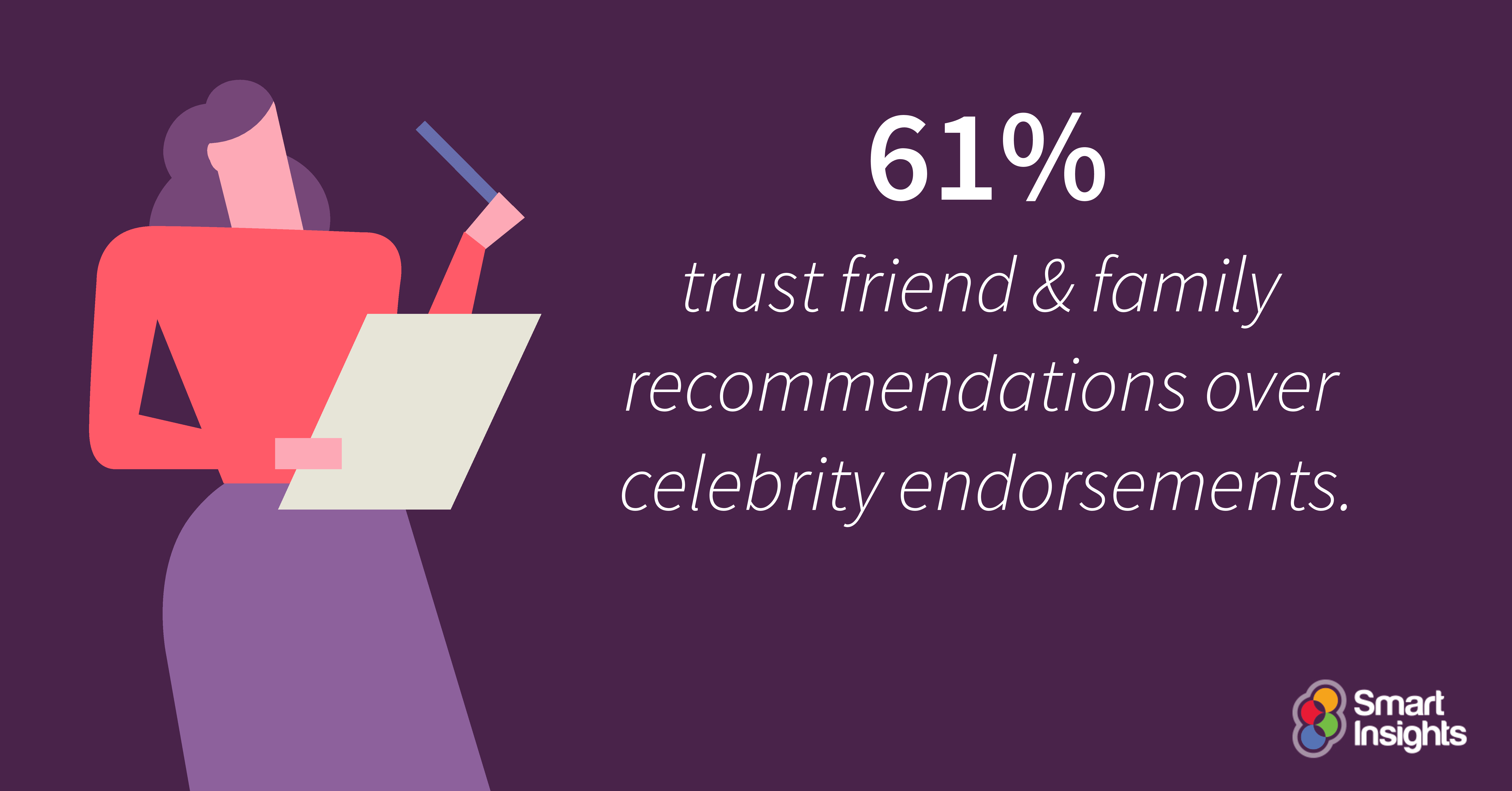
61% of consumers are more likely to research a product recommended by a friend on social media
Influencers are a big part of many brands’ social media strategy, especially when it comes to B2C e-commerce. Getting a big name to show off your product and create a review or even partner with your brand has seen many companies benefit from increased awareness and engagement on social media.
It seems that the days of celebrity endorsements are over though, as Sprout’s recent study into company transparency has revealed that consumers are almost twice more likely to look at a product or service recommended by a friend or family member than they are one suggested by an influencer or celebrity (61% vs. 36%).
This suggests that user-generated content (UGC) is a much better investment for brands on social media than influencer posts. UGC can be everything from customer reviews to images or videos, offering an impartial opinion on your products or services, as well as providing you with free marketing material.
Rather than paid content, UGC provides customers with opinions that are honest and transparent, meaning they are more likely to trust the recommendation. This taps into the fact that friends and family recommendations carry more weight and can be a great way to showcase your brand in a variety of different ways.
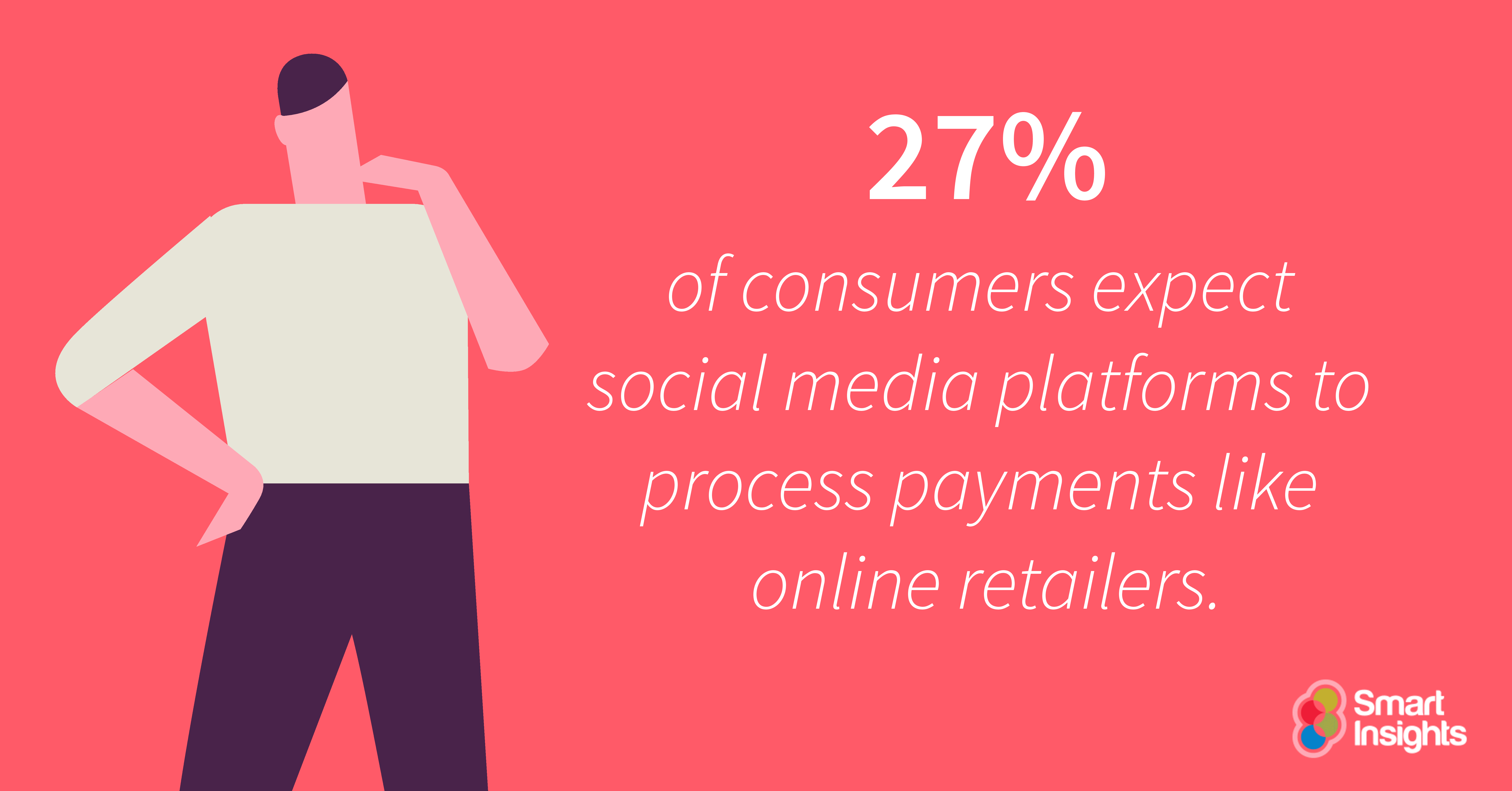
49% of consumers are buying through social media
Updates to social media platforms now mean that more customers than ever are actively shopping through brand’s pages, according to research by GlobalWebIndex. The introduction of the Facebook shop and the ability to tag products on the platform and Instagram have made it easier than ever for users to buy what they see, as soon as they see it.
Rather than having to click through to a brand’s e-commerce store and then finding the product they saw on social media, the customer can click the tag or a product in the Facebook shop and go straight to the product. This effectively reduces the length of time it takes to push a customer through the purchase funnel, tying in well with the falling attention span of consumers.
Brands that sell physical products, could, therefore, boost sales by starting a Facebook store and tagging their products on the platform, as well as Instagram. It’s quick and easy to add individual products to the store and to tag your promotional images.
You can also create collections within your store, making it easy for customers to browse product types or seasonal products, effectively turning your brand’s Facebook page into an extension of your e-commerce website.
Failing to include tagged products in your social media strategy can mean you miss out on quick and easy sales, especially as 27% of consumers also expect social media platforms to handle payments in the same way as online retailers.
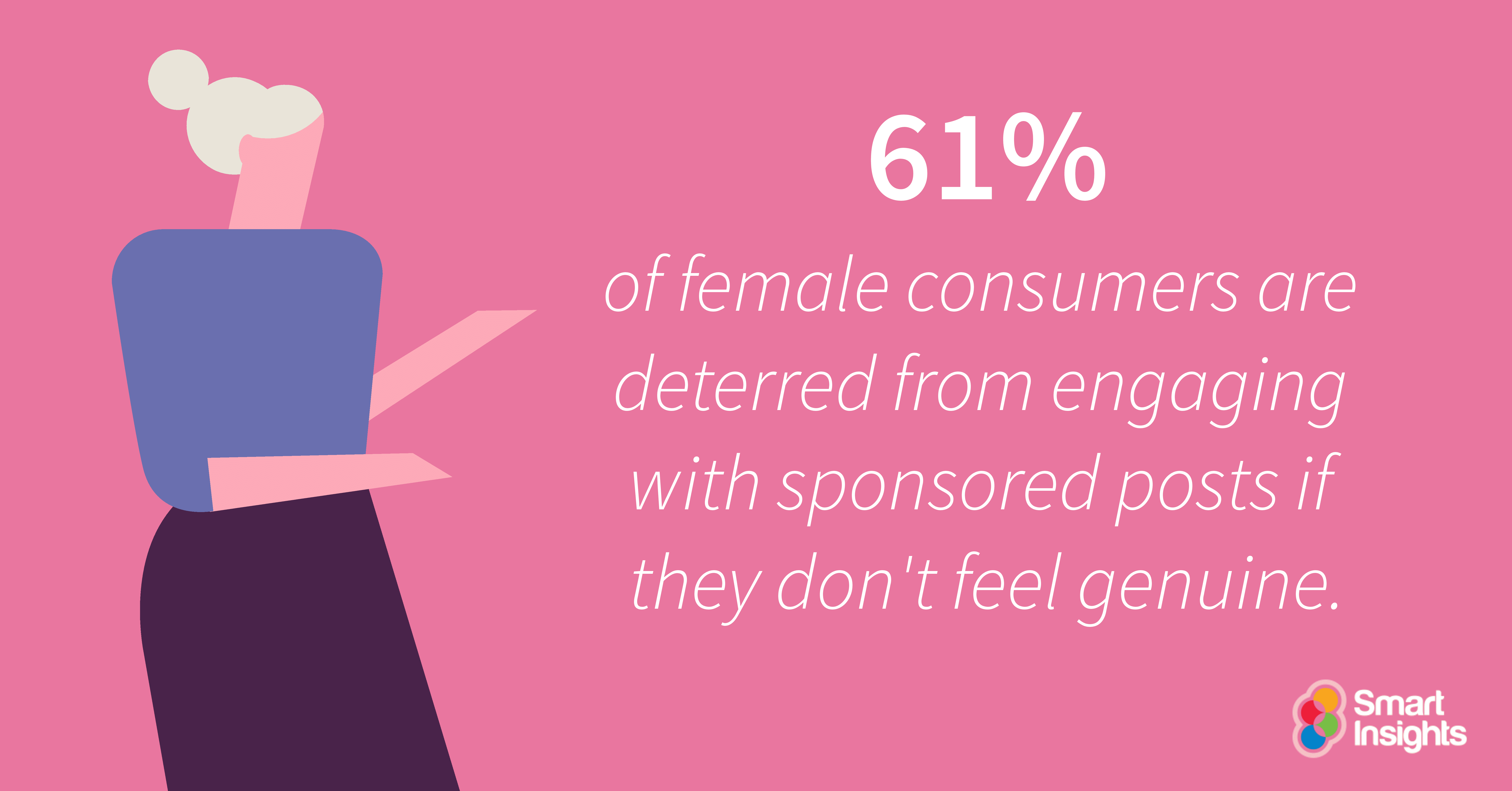
45% of Gen Z follows more than 10 influencers on social media
While social media users trust recommendations from those they know, almost half (45%) of Gen Z still follow ten or more influencers, showing that they still have a place in your social media strategy alongside UGC.
A study from The Center for Generational Kinetics has found that younger social media users still put store in influencers, with 10% following 50 or more across different platforms. This shows that brands can still benefit from influencer marketing campaigns, so long as they know who their targeted audience is and are able to work with an influencer who will talk to this audience while adding authenticity to their brand.
However, working with the wrong influencer can be detrimental to your brand, as 61% of female consumers say that they are actively deterred from engaging with sponsored social posts if the content doesn’t feel genuine. On top of this, a further 59% state that posts that are inconsistent with the rest of the influencer’s feed feel fake.
In short, just because an influencer has a large following, it doesn’t mean they are right for partnering with your brand. After all, you don’t want someone trying to promote a car service if they are primarily a beauty blogger.
Working with influencers can also be quite pricey and the ROI may not be worth it. A good recommendation, especially for small to medium-sized brands is to focus on micro-influencers. They may have a smaller following, but their followers are going to be a lot more engaged and there will be a greater level of trust.
If your target audience are gen Z, including micro-influencers in your social strategy – whether it’s through sponsored posts or account takeovers – could help increase awareness, engagement and conversion.
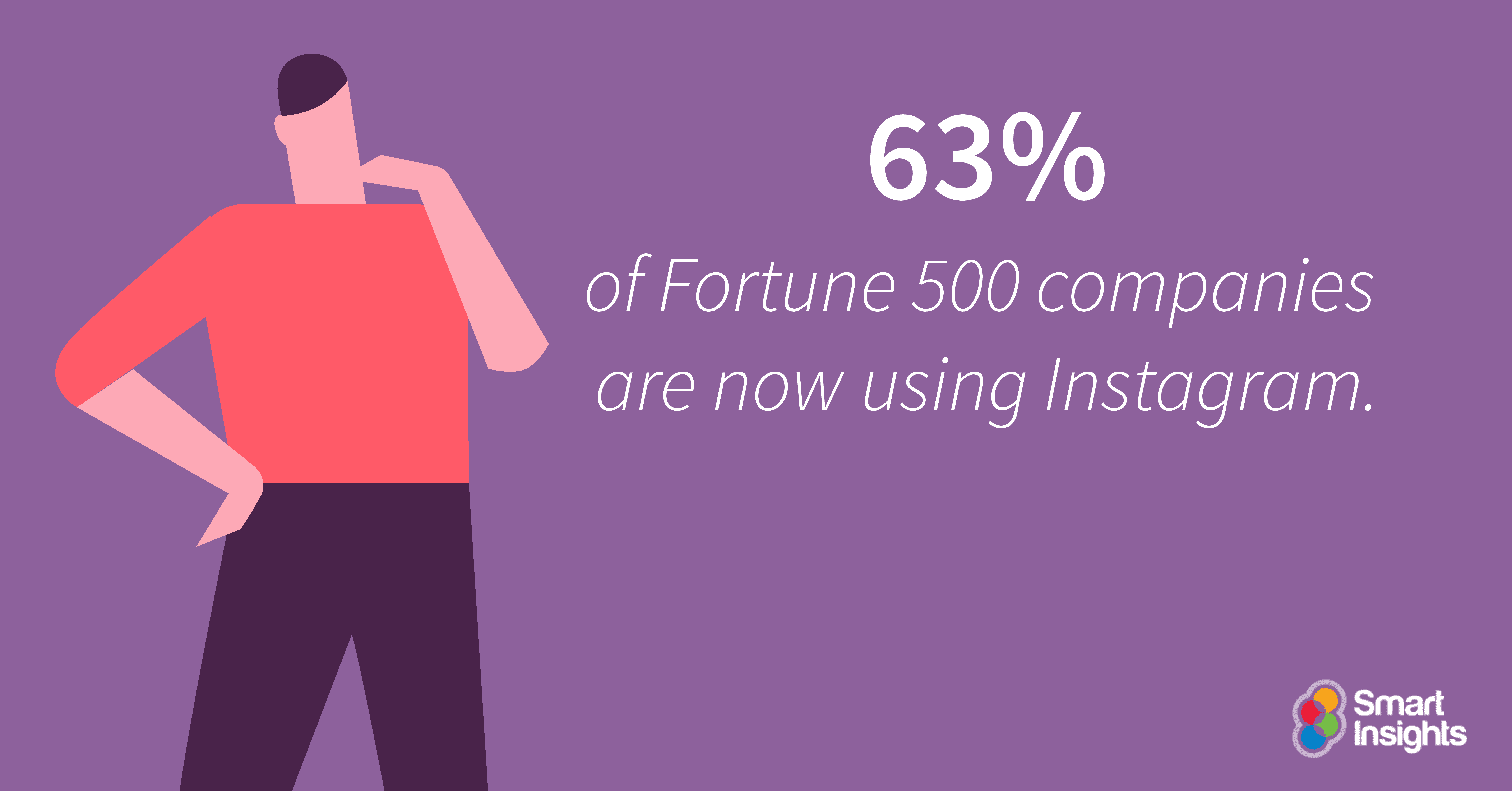
63% of Fortune 500 companies are now using Instagram
The popularity of Instagram for brands is continuing to increase with 63% of big brands now having accounts, making it an important social media platform for all businesses. Last year, just 53% of Fortune 500 companies were using Instagram, representing a 10% increase in 12 months.
When you consider the fact that the number of monthly Instagram users reached one billion in June this year (up from 800 million in September 2017), the sharp increase in Fortune 500 companies using the platform makes a lot of sense. It also goes to show that if your brand isn’t on Instagram or doesn’t really have a social media strategy that makes the most of this platform, you need to change this soon.
Instagram serves as a great platform for sharing product images, lifestyle shots, the cultural side of your business and UGC. Unlike Facebook and Twitter, it is all about the imagery, with no links in comments or statuses being clickable. This means you need a strategy that will bring people to your profile and encourage them to click through to your site via the link in your company’s bio or tag products in posts to make it easy to shop.
However, Instagram isn’t just about standard photo posts. It has become a fantastic place for video and its stories have quickly overtaken Snapchat in terms of popularity. All of this needs to be taken into account when creating a strategy for your brand’s Instagram.
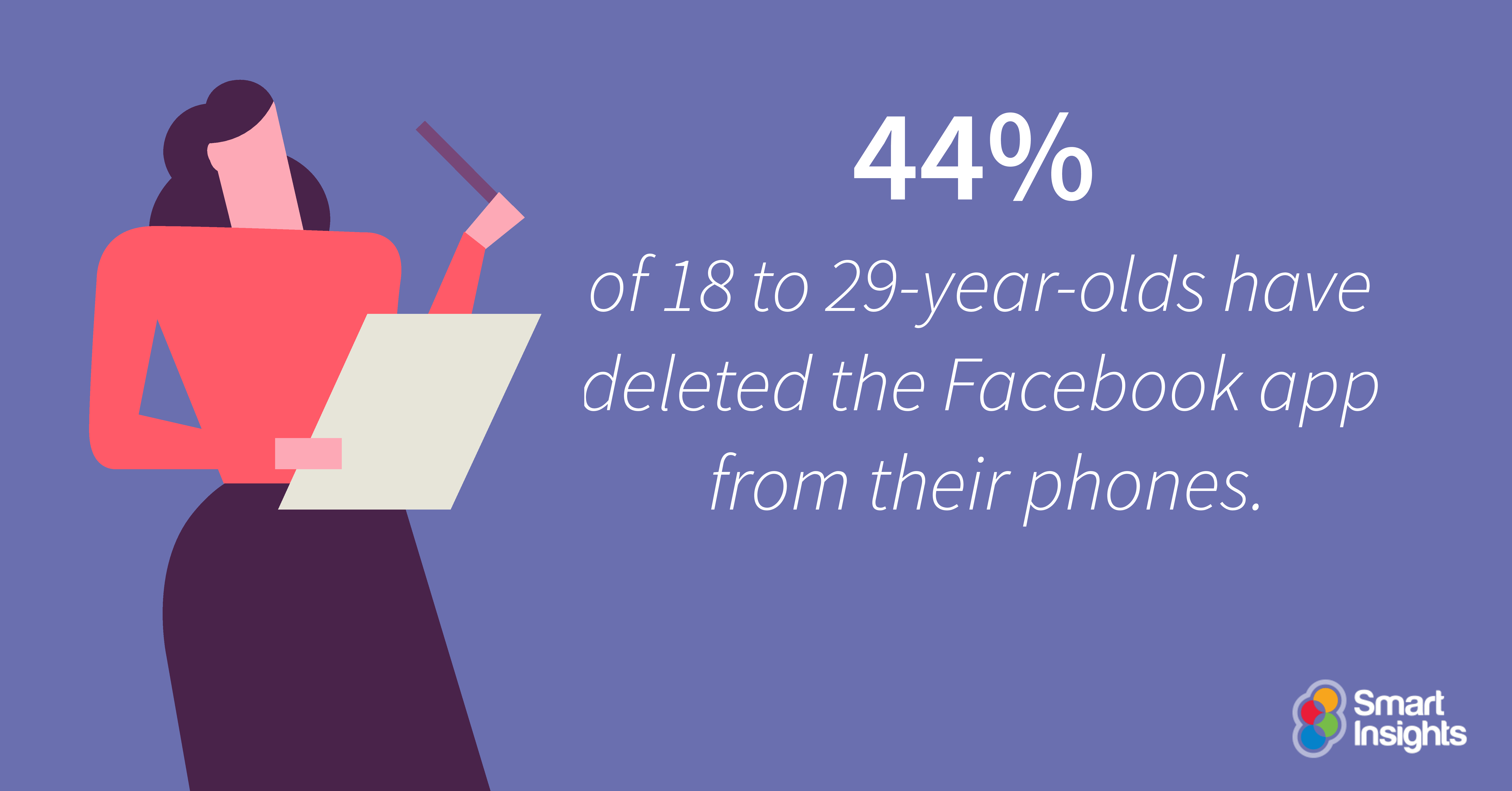
42% of Facebook users aged 18+ have taken a break from the platform
Facebook fatigue is a very real thing and more and more young users are opting to take a break from checking the platform for several weeks, with some failing to log in for over a year. Those aged between 18 and 29 are most likely to log out of Facebook for extended periods, with a study finding that 47% of users within this age group have done so.
A further 44% of 18 to 29-year-olds have actually gone one step further by deleting the app from their phones within the 12 months previous to the study.
For brands hoping to target this demographic, this can have a huge impact on the direction of social media strategies, as well as ROI. After all, if your audience isn’t always on Facebook and is getting fatigued with the platform, your messages are likely being missed.
This is where detailed audience research and developed personas come in. After all, you need to know what social media platforms your targeted audiences are using, what types of posts best resonate with them and – most importantly – how to talk about your own brand in a transparent way that inspires trust.
Final thoughts
While each of these statistics can help you to develop or create your social media strategy, they aren’t the be all and end all. These statistics can help give you some direction for now, but the world of social media is constantly changing and evolving, so your strategy needs to be reactive.
Keeping on top of the latest advances can ensure you are seeing the best returns on social media and are continuing to target the right people in the best way. Although, you still need to take care not to change your strategy just for the sake of it or to react without the research to back up. You need to make social media work for your brand, not the other way around.
